Darius I the Great: Travel
Darius I (Old Persian Dârayavauš): king of ancient Persia, whose reign lasted from 522 to 486. He seized power after killing king Gaumâta, fought a civil war (described in the Behistun inscription), and was finally able to refound the Achaemenid empire, which had been very loosely organized until then. Darius fought several foreign wars, which brought him to India and Thrace. When he died, the Persian empire had reached its largest extent. He was succeeded by his son Xerxes.
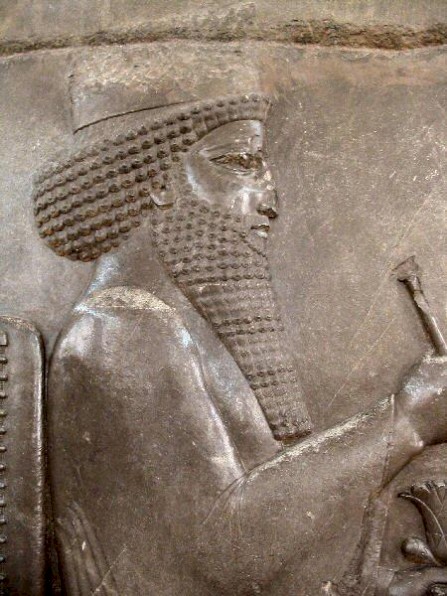
Reconstructing the reign of Darius after his visit to Egypt in 518-517 (above) is difficult. Nevertheless, we are not entirely left in the dark. The Histories of Herodotus of Halicarnassus suggest that Darius' Scythian campaign took place in the summer of 513 and it seems certain that the Ionian insurrection started in 499. There is sufficient evidence that the great king visited Egypt in 497, and no one doubts that the battle of Marathon took place in 490. Babylonian letters indicate that Darius died in the second half of November 486. This is the framework in which other pieces of information can be fitted.
These other pieces of information are the Empire lists: texts in which the king boasts that, by the grace of Ahuramazda, he is ruler of several countries. The Behistun inscription, for example, contains the following line:
These are the countries which are subject unto me, and by the grace of Ahuramazda I became king of them: Persia, Elam, Babylonia, Assyria, Arabia, Egypt, the countries by the Sea, Lydia, the Greeks, Media, Armenia, Cappadocia, Parthia, Drangiana, Aria, Chorasmia, Bactria, Sogdia, Gandara, Scythia, Sattagydia, Arachosia and Maka; twenty-three lands in all.note
There are three other Empire lists from the age of Darius (you can read them here):
- On the terrace of Persepolis. This one does not mention Thrace, but does mention Induš, the southern valley of the river Indus. This proves that the conquest of southern India took place before the foundation of Persepolis, and much earlier than the invasion of Europe of 513.
- In Susa. As it mentions the European Scythians and the Thracians, it has to be dated after 513. It also makes a new distinction between two groups of Asian Scythians, which suggests at least war in the north-east.
- On Darius' tomb at Naqš-i Rustam. This time, Cyrenaica and Kush (modern Sudan) are added. As Cyrene was, according to Herodotus, conquered at about the same time as Thrace, we are left with a minor puzzle: either Herodotus is wrong (and Cyrene was conquered later), or it was first ruled as part of Egypt (and became a satrapy later). The latter seems more plausible. The inscription at Naqš-i Rustam was finished after 492, because it mentions the conquest of Macedonia.
Using these bits of information, we can try to give a speculative reconstruction of Darius' travels through the empire.
Returning from Egypt in 517, Darius must have visited Persia. It is possible that he now chose to build Persepolis. The following year, he started a large tour to the east. He must have inspected Media and Parthia (where he may have visited his father Hystaspes), Aria, and Bactria. It is possible that during this visit, the old satrap, the reliable Dâdarši, was replaced by the king's brother Artabanus (he is mentioned in the Persepolis fortification tablets). The winter was spent in Gandara, preparing for the Indian war.
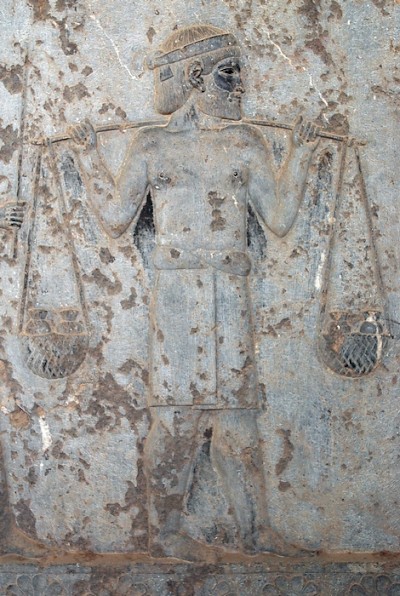
We do not know much about the campaign in India, but it is likely that Darius visited Taxila in the spring of 515 and passed through the southern valley of the Indus, Hinduš, during the summer. This area produced gold and it comes as no surprise that the daric coinage was introduced after 515 (above). Perhaps Herodotus' fascinating anecdote about the comparison of the Greeks and Indians can be placed during the Indian expedition. Among the Greeks who were present was a sailor named Scylax of Caryanda, who was ordered to return by sea and explore the coasts. There is some evidence that Darius ordered his men to take sugar cane with them, a plant that appeared in the late sixth, early fifth century in southern Mesopotamia.
It is not likely that Darius returned through Gedrosia. Darius' predecessor Cyrus had once lost an entire army in the desert (and Alexander the Great was to do the same). Instead, Darius must have taken the Bolan pass and returned through Arachosia and Drangiana. The Persepolis inscription, composed immediately after his return to Persia, is the only Empire list to mention the Sagartians as a satrapy. It is possible that this reflects a measure taken during Darius' eastern voyage, but we must not place too much trust on this. In 514, Darius had returned and he may have celebrated New Year in his new capital Persepolis, which was still under construction.
The year 513 (or 514?) saw the expedition against the Scythians of modern Ukraine. Our main source is Book four of the Histories of Herodotus, but his description is imprecise and unclear. What seems certain, however, is that after crossing the Bosporus by means of a large bridge, Darius marched through Thrace and reached the Danube, where the allied Ionian Greeks had built a bridge. When the Persian army had crossed into what is now Romania, the king ordered this bridge to be destroyed.note
If this is a fact, we may assume that Darius wanted to fight his way through Ukraine and across the Caucasus to Armenia or to the country of the Asian Scythians, the Sacae. This hypothesis is as close as we can get to Darius' war aims.
Herodotus tells that the Scythians receded and refused to give battle (their normal tactic against regular armies), and lured Darius as far east as a river called Oaros. This name usually indicates the Volga, but it is more possible that the Persian army did not pursue their enemies beyond the Dnepr. Here, Darius was finally able to join battle with the Scythians, but he realized that he could never win and followed Gobryas' advice to return to the Danube. At least, that is what Herodotus says. He adds that the Greeks at the Danube had kept the bridge intact, so that Darius was able to return safely. He left behind Megabazus as governor of his European possessions, and this man subdued Thrace.
It is impossible to reconstruct the historical truth behind this story, unless we obtain new sources - which is always possible in the underexplored cuneiform archives of Mesopotamia and Iran. No one denies that the Persians conquered parts of Europe, but the Scythian campaign remains problematic.
At more or less the same time (according to Herodotus), the Greek towns of the Cyrenaica were conquered by the Persian armed forces. It seems to have been a minor operation. The satrap of Egypt, Aryandes, ordered others to go to war: a Persian admiral named Badres, and a general named Amasis. Although Herodotus wants us to believe that the latter was a Persian, he has an Egyptian name, and it seems that he was connected to the former royal house of Egypt. He may have been the son of Psammetichus III, the last pharaoh of independent Egypt.
At this point, we lack chronological indications for about thirteen years. What happened is not clear. The empire was, by now, safe and sound. In the northwest, the Aegean Sea and the Black Sea were the border of empire, and the Persians occupied advanced positions in Europe. In the east, the mountains of Baluchistan were a natural frontier, with advanced positions in the Indus valley. Finally, in the southwest, the Sahara was the empire's border, with an advanced position in Cyrenaica.
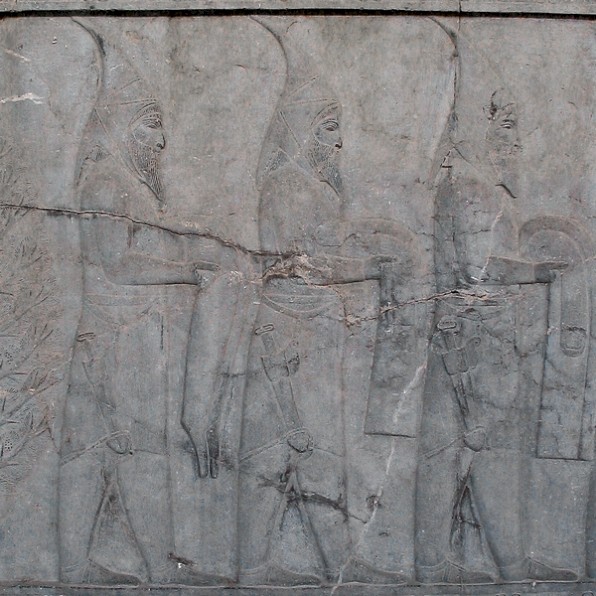
The Susa inscription, made after 513, is our next clue. It makes a new distinction between two groups of Asian Scythians: the Sakâ haumavargâ, "the haoma-drinking Sacae", and Sakâ tigrakhaudâ, "the Sacae with pointed hats". The Sacae were in fact the same people as the Scythians, although the latter lived in Europe and the first-mentioned in Asia. The change in terminology proves that the Persian government had developed a new vision on the frontier area in the northeast, where either new tribes had been subdued or a new administrative organization imposed. Probably, a war has taken place, and it is likely that Darius was there too.
Perhaps the following anecdote by the Gaeco-Roman military author Polyaenus belongs to this campaign. A Sacaean guide had brought the army to a deserted and waterless region, but Darius was able to rescue his men:
He climbed a very high hill, and after fixing his scepter in the ground, he placed his tiara and the royal diadem on top of his royal robe. This was at sunrise. He prayed to Apollo to save the Persians and to send them water from heaven. The god listened, and abundant water fell.note
It is interesting to meet Darius as rain-maker. Unfortunately, we do not know which god stands behind the Greek name Apollo. He may be identical to Ahuramazda, who was often equaled to Apollo by the Persians; an alternative is Mithra, who was often called Apollo by the Greeks; Hvarîra and Tištryâ were responsible for sunrise and rainfall.
In 499, we get more information from Herodotus again. In this year, the Ionian Greeks revolted against the Persian government. The cause of their insurrection is not known, but the weight of taxation is a plausible candidate. Darius, by now about fifty years old, did not visit the front in person. After a reign of 23 years, his position was uncontested and he could sent away very large armies; nobody would rise against him.
Instead, the king of kings visited Egypt for the third (or fourth) time, where the above-mentioned canal between the Nile and Red Sea was opened officially in 497. An inscription commemorates the event:
Darius the King says: I am a Persian; from Persia I seized Egypt; I gave order to dig this canal from a river named Nile which flows in Egypt, to the sea which goes from Persia. Afterward this canal was dug thus as I had ordered, and ships went from Egypt through this canal to Persia thus as was my desire.
The inscription of Naqš-i Rustam, which can be dated after this visit, mentions Cyrenaica and Kush as new satrapies. The former was already part of the Persian empire, and the latter may have become a tributary; probably, the Naqš-i Rustam inscription merely records an administrative change. It is possible that during this visit, in 498, the satrap of Egypt, Aryandes, was executed. (He was suspected of treason.)
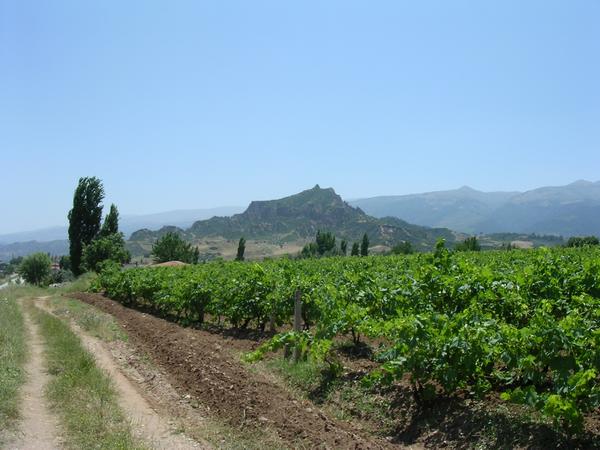
Meanwhile, the war against the Ionian Greeks was still going on. The Greek leaders were democrats from Miletus, and at the beginning, they had been very successful. The Persians had to witness how the Greeks had destroyed the residential areas of Sardes, their capital in western Turkey. The satrap of Lydia, Darius' brother Artaphernes, however, had been able to keep the citadel and stood his ground until reinforcements arrived. Greek attempts to conquer Cyprus failed when the Persian navy, made up from Phoenician and Egyptian ships, turned up. If the removal of Aryandes can indeed be dated to 497, we can be sure that its real reason was the need to have a reliable admiral for the Egyptian navy.
Ultimately, the Persian army commanders -Herodotus gives their names as Hymaees, Daurises, Artaphernes, and Otanes- overcame the Greek towns of western Asia. Miletus was sacked in 494. Now, the reconquered part of the empire had to be secured. Therefore, general Mardonius, the son of Gobryas who was married to Darius' daughter Artozostre, was sent out to conquer Macedonia (492). Although Herodotus presents this campaign as a disaster, it was in fact successful: Macedonia was added to the empire and is mentioned as a satrapy on the Naqš-i Rustam inscription.
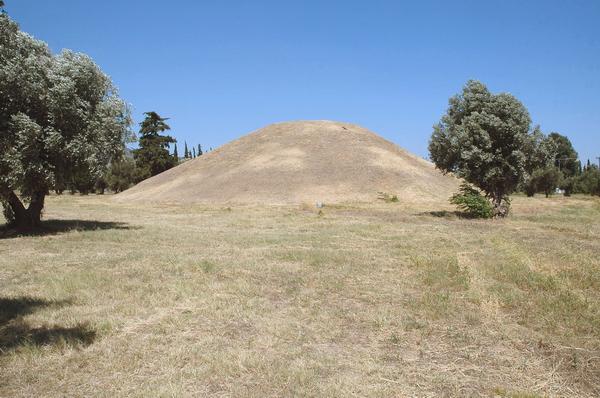
In 490, king Darius sent a new expedition to the west. The commanders were Datis and Artaphernes (son of the former satrap of Lydia). Herodotus presents the expedition as a punitive action against Eretria and Athens, who had helped the Ionian Greeks during their revolt of 499. But he is almost certainly wrong, because the army was too small to attack Athens. In reality, the aims of the expedition of Datis and Artaphernes were to add the Aegean islands to the empire, and, in doing so, create a buffer zone between Ionia and the Greek mainland. The Persian aims were, therefore, to conquer Naxos and the other islands, and to occupy Euboea (with its capital Eretria). They also tried to bring back the former ruler of Athens, Hippias, to his home town.
At first, the expedition was entirely successful. According to plan, the Persians added Naxos to their empire. Delos was seized immediately afterwards; the Greek god Apollo received a giant sacrifice, probably because the Persians identified him with Ahuramazda. A few days later, on 1 September, Datis and Artaphernes took Eretria. Its inhabitants were deported to Elam.
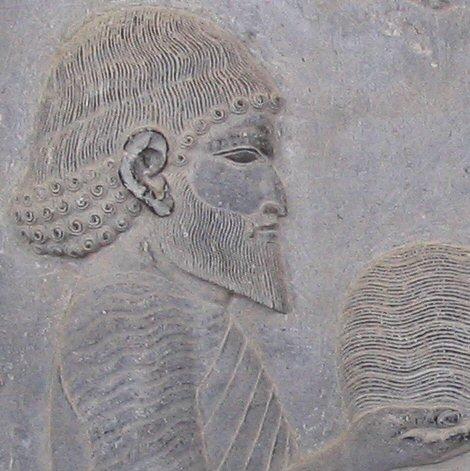
On 5 September, the Persians landed at Marathon, some 25 kilometers east of Athens. Although an Athenian army came to block the road to the west, it did not dare to attack the Persians, who were able to plunder the country for five days. Since their enemies refused to offer battle, Datis and Artaphernes decided to leave early in the morning of 10 September. When they were boarding, the Athenians attacked and inflicted heavy losses on the Persian troops.
Herodotus' account of the battle of Marathon is our most important source. He wants us to believe that it was an important Greek victory, but from a Persian point of view this is incorrect. It was a rearguard action, and we know for certain that Artaphernes remained in the king's favor; it is likely that Datis had the same experience. After all, from now on, the Aegean Sea was under Persian control, preventing new Yaunâ attacks on the Persian dominions in Asia.
Yet, the Persians had learned one lesson during the preceding decade: the Greeks were dangerous warriors. Herodotus claims that Darius made the conquest of the Greek mainland one of the goals of the Persian foreign policy. Although we may ask how Herodotus knows this, here is no reason to doubt the truth of his statement.